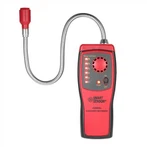Use a multimeter to test the quality of your speakers
When using a multimeter to test the speaker, you can judge whether the speaker is damaged by detecting the resistance of the speaker. Before testing, you can first understand the nominal AC impedance value of the speaker to be tested to provide a reference standard for testing.
Use a multimeter to measure the resistance between the two output pins of the speaker, and judge whether it is good or bad according to the test results.
Note: It is worth noting that the nominal resistance value 89 on the speaker refers to the resistance value presented by the speaker when it is driven by a normal AC signal, that is, the AC resistance value; when the multimeter detects it, the measured resistance value is the DC resistance value .
Under normal conditions, the DC resistance should be close to and less than the nominal AC resistance. If the measured resistance is zero or infinite, the speaker is damaged and needs to be replaced.
In addition, if the speaker performance is good, when testing, put one test lead of the multimeter on one terminal of the speaker, when another test lead touches the other terminal of the speaker, the speaker will emit a "brown brown". ”; if the speaker is damaged, no sound will come out. In addition, if the coil is stuck or stuck in the speaker, the paper cone is damaged, etc., it cannot be judged with a multimeter, and it must be judged by listening to the sound effect.






